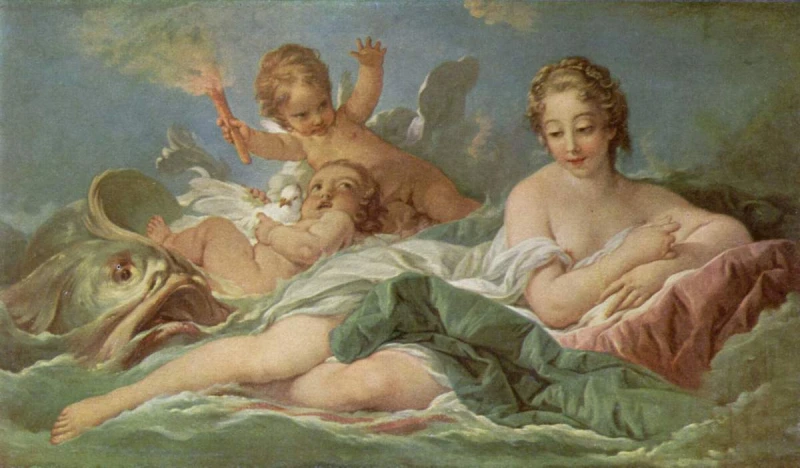What if love and lust were more than fleeting emotions? What if they were divine forces controlled by gods and goddesses who held sway over our hearts and desires? Many of you must have thought about it, and it’s true too.
Throughout history, civilizations have brought these powerful feelings to life through mythological deities—figures who could ignite passion, inspire romance, or even stir chaos. From Aphrodite’s irresistible charm in Greek mythology to Kama’s blazing passion in Hindu traditions, each deity offers a fascinating glimpse into the complexities of attraction and affection.
Knowing about these captivating gods and goddesses of love and lust from different mythologies is about exploring how ancient cultures portrayed these emotions. So, buckle up as we uncover these ancient tales and see how their legendary interpretations still whisper through our modern views on love and desire.
Iconic Deities of Love and Lust from Different Mythologies
From ancient times, societies have formed mythologies of deities that they equate to love and lust. Thus, deities associated with love can be soft, nurturing figures to war-making deities.
Let’s look at some of the most iconic love and lust deities from different traditions and see how their stories reflect the values of the people who worshiped them.
1. Aphrodite (Greek Mythology)
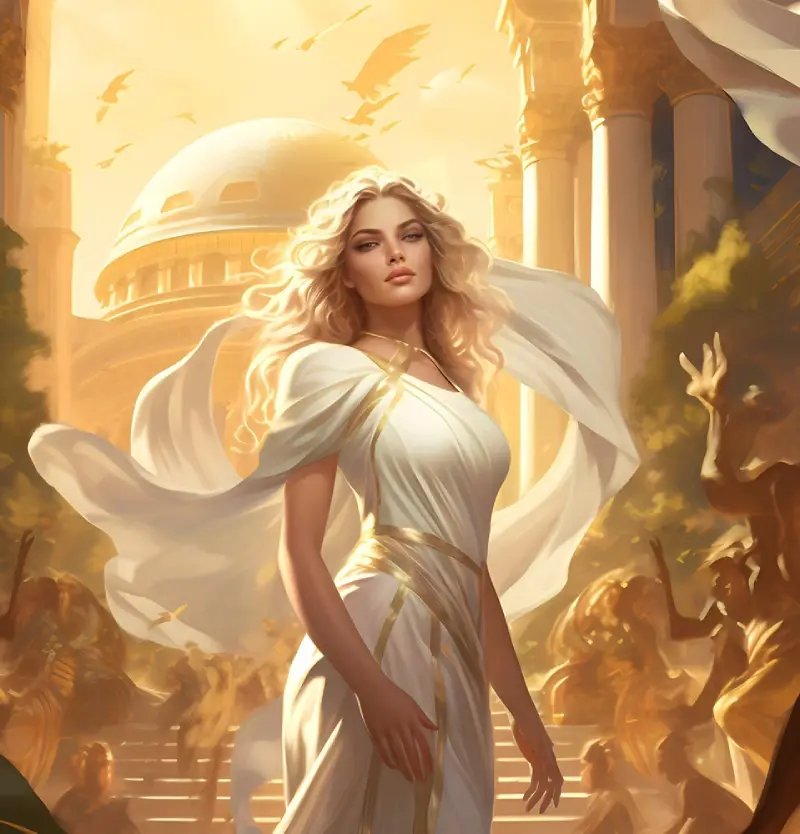
Aphrodite is the Greek lady of love, beauty, and desire, perhaps the most famous mythical character. More often than not, she was depicted as incredibly relevant because she was able to incite desire within even gods and mankind.
Mythology says that she was born of the sea foam, which illustrates the nature of the love in question. She is born out of the sea, which embodies creation, a quality deeply interrelated with the of love and attraction.
But she wasn’t limited to the sweet side of Roman romance; she also cherished the savage side of desire. She led an active and animated romantic life, including an affair with Ares, the god of war. In such an Athenian world, Aphrodite reconciled love’s gentler and wilder aspects.
As a goddess in charge of love, the aspect of Aphrodite was not limited to the emotional dimensions of love only because it also encompassed the pleasures of physical love. Romantic relationships were not the only type of relationships doped by her influence; beauty and its were also included.
This made her an essential part of many myths and one of the most important deities of Greek culture, which honored her for personal love, energy, and beauty in every sphere of existence.
2. Freya (Norse Mythology)
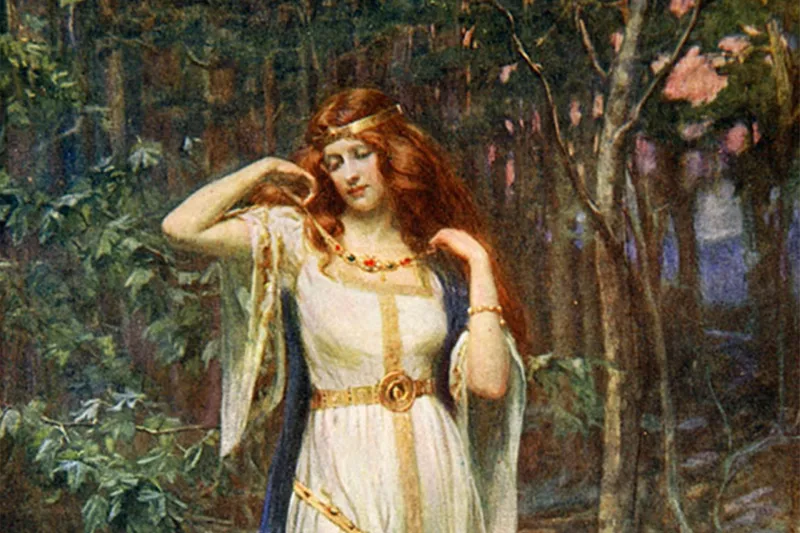
Freya, the Norse goddess of love, fertility, and warfare, stands out as one of the most powerful and intriguing figures in Norse mythology. Though a nurturer of life, her role as the mistress of the Valkyries—deciding who lives and dies in battle—ties her closely to death and fate, contrasting with her nurturing qualities.
Freya’s mastery of seiðr, a form of Norse witchcraft, grants her control over destiny and other mystical forces. Her image intertwines magic, sensuality, and desire, making her both brutal and tender.
A well-known myth involves Freya searching for her lost husband, Óðr, while shedding golden tears, symbolizing the depth of her love. This blend of passion, strength, and vulnerability solidifies Freya’s association with love and desire, making her a timeless figure in mythology.
3. Tlazolteotl (Aztec Mythology)
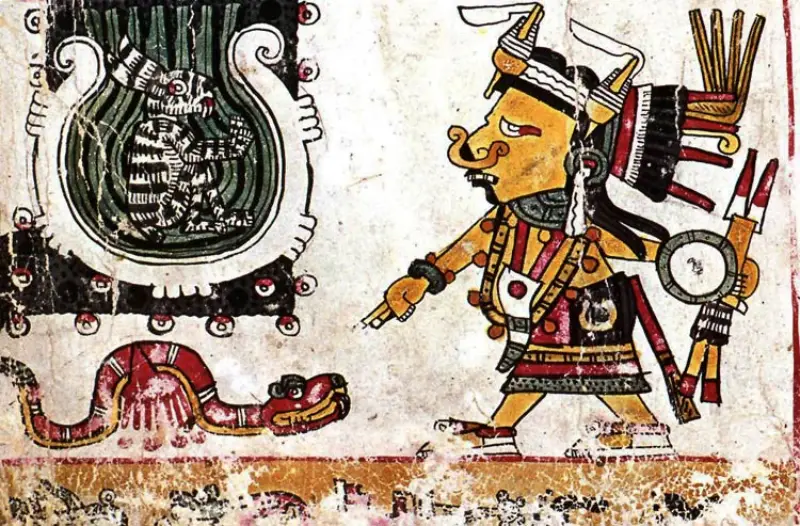
Sacred to the Aztecs, Tlaloc, or Tlazolteotl, is the deity representative of love, fertility, and sexuality, although she is a goddess associated with purification and health. She is frequently portrayed as an attractive woman, thus representing the nurturing and ardent angle of love.
The Aztec Tlazolteotl archetype admits both longing and shame. Extremely valued women’s services were, in her case, according to the descriptions, the cleansing of people’s transgressions, especially those of a sexual nature. This dualism makes her an exceptional goddess today because she represents the notion that love and lust are both joyful and painful.
Her worship, accordingly, was replete with fertility-oriented and sexual-angle rituals. This is where the surprise comes – she loves to make people love her, but she also makes them carry on their love responsibilities in return.
4. Astarte (Phoenician Mythology)
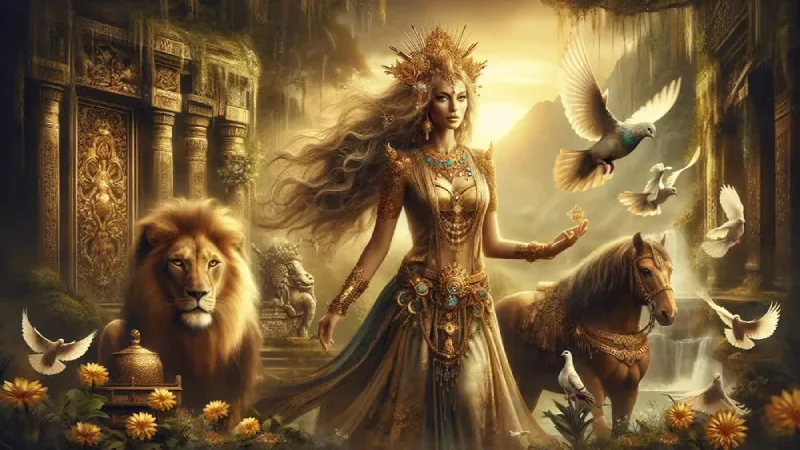
Astarte, one of the chief deities in Phoenician religion, was worshiped as a goddess of love, war, and fertility. She embodied the fierce and powerful aspects of feminine desire. She was not only revered for her association with love and sex but also as a warrior, intertwining passion with strength.
Astarte’s worship often included rituals related to fertility and agriculture, highlighting her significance in both the physical and societal realms of Phoenician life.Astarte was called upon as a defender of women in matters of love and marriage, making her a key figure in domestic and social life.
Her influence extended beyond Phoenicia, with the Greeks and Egyptians recognizing her similarities to their own goddesses.
Astarte’s presence in these cultures demonstrated that love and passion were powerful forces capable of building and destroying empires.
5. Oshun (Yoruba Mythology)
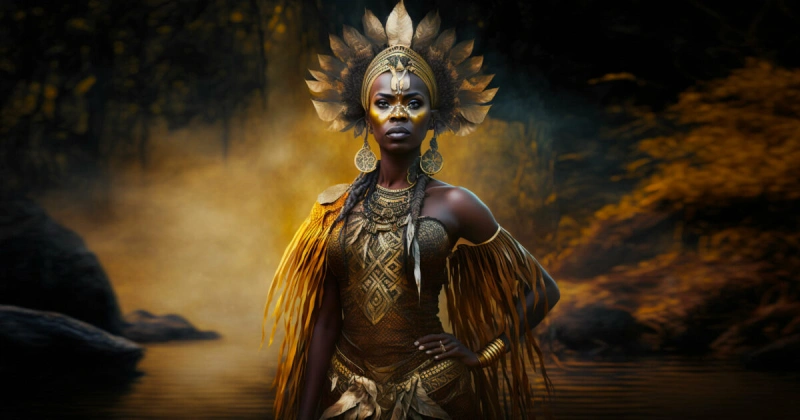
Oshun is one of the most respected deities in Yoruba mythology. She is the divinity of beauty, love, fertility, and rivers. Often depicted adorned in gold, she symbolizes compassion and grace. Known for her nurturing nature, Oshun governs love and beauty with a gentle yet powerful hand, making her an essential figure in affection, fertility, and well-being.
In the belief system of the Yoruba tribe, Oshun is regarded as a kind-hearted and wholesome deity who endows wealth and affection on her worshippers. She is often sought after in issues of the heart and helps people sparkle in love while keeping goodwill in the relationships. Her sensual glance and motherly affection represent the value of love and affection in people’s lives.
Oshun is also a warrior and protector of women.
Thus, she does not only foster love; she also takes up causes on which one may proceed to love. It is also said that her purpose is to love but with a specific requirement: strength and fighting.
Thus, through her detailed stories, Oshun portrays how love is kind, soothing, and full of willpower.
6. Parvati (Hindu Mythology)
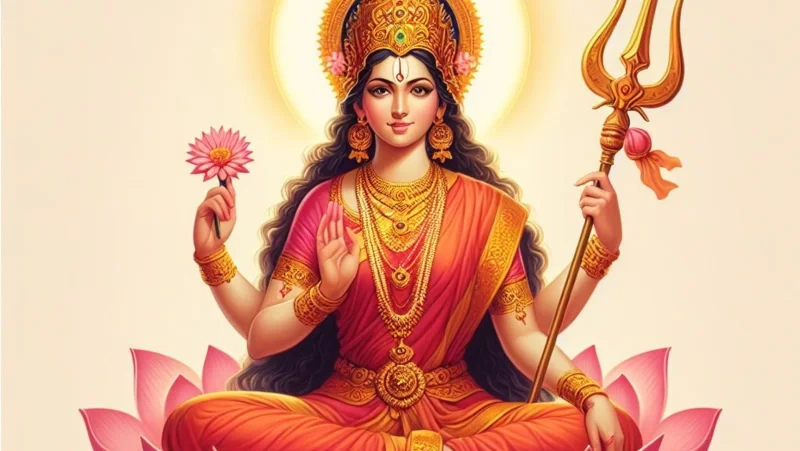
Parvati, a central figure in Hindu mythology, is the goddess of love, devotion, and cosmic order. As the wife of Lord Shiva, the god of death and chaos, Parvati balances his destructive power with her role as a nurturer and creator, embodying peace and order. She is worshiped as the personification of Shakti, the divine feminine energy that sustains the universe.
Parvati’s unwavering love for Shiva is a symbol of marital devotion, inspiring ideals of loyalty and dedication in Hindu culture. Her strength and patience are evident in various myths, such as her intense meditation to reunite with Shiva and her role as the mother of Ganesha and Kartikeya.
While Parvati is gentle and nurturing, her warrior aspect, Durga, represents her fierce, protective side, showing the duality of love and power in her character.
This interplay of creation and destruction in her stories highlights the transformative nature of love, demonstrating that it is not only about affection but a force capable of uniting and reshaping the world.
7. Cupid (Roman Mythology)
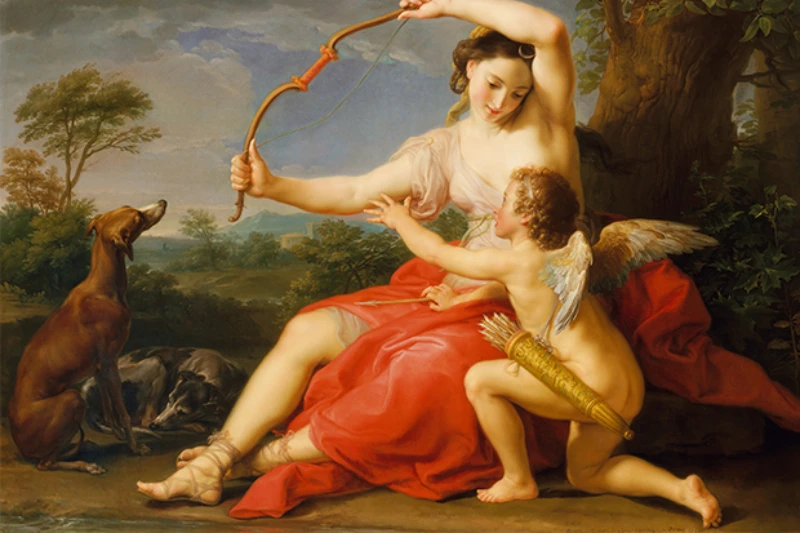
One of the gods of Roman mythology is referred to as Cupid. This appears as a boy with wings and a bow and arrows. He is iconic for piercing the gods’ and mortals’ hearts, thereby making them fall in love.
Cupid represents the fun side of love. He also highlights the fun parts where one can be attracted, but it fluctuates. This is one of the reasons Cupid is linked to love stories today as well.
More often than not, in Roman society, Cupid’s entire being is connected to that of his mother, Venus, the god of beauty and love. Together, they show that love is bliss; however, it has its dark side, and that bliss can turn into tears.
The tales of Cupid demonstrate how sometimes love works most unpredictably, making people behave in ways they do not want.
8. Ishtar (Mesopotamian Mythology)
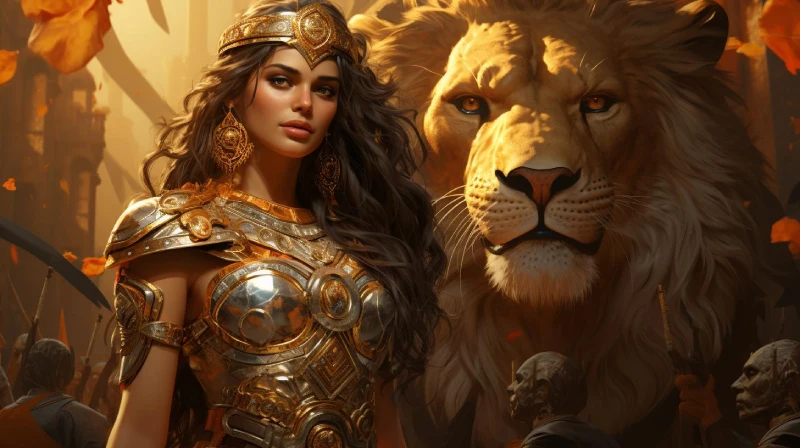
Ishtar is one of the most revered goddesses in Mesopotamian mythology, intimately related to love, war, and fertility. Supremely depicted as a gorgeous, tough military leader, she encompasses both the reproductive and destructive features inherent in love.
The juxtaposition of masculinity and femininity in Ishtar can be seen in her character as a corned woman and enraged lover, which makes her a vicious enemy to encounter.
In the early empires of Mesopotamia, Ishtar was also worshiped in several temples all over the map. Many of the festivities involving the goddess had to do with people expressing rather than celebrating love and sex. Ishtar is also associated with many love affairs, including with Gilgamesh, which, although not wholly surprising in this case, highlights the complicated aspects of people’s emotions.
Ishtar wants us to remember that it is possible to care for someone and, at the same time, be embroiled in unrelenting feuds with that person, championing the dangerous and fiery side of love.
9. Kama (Hindu Mythology)
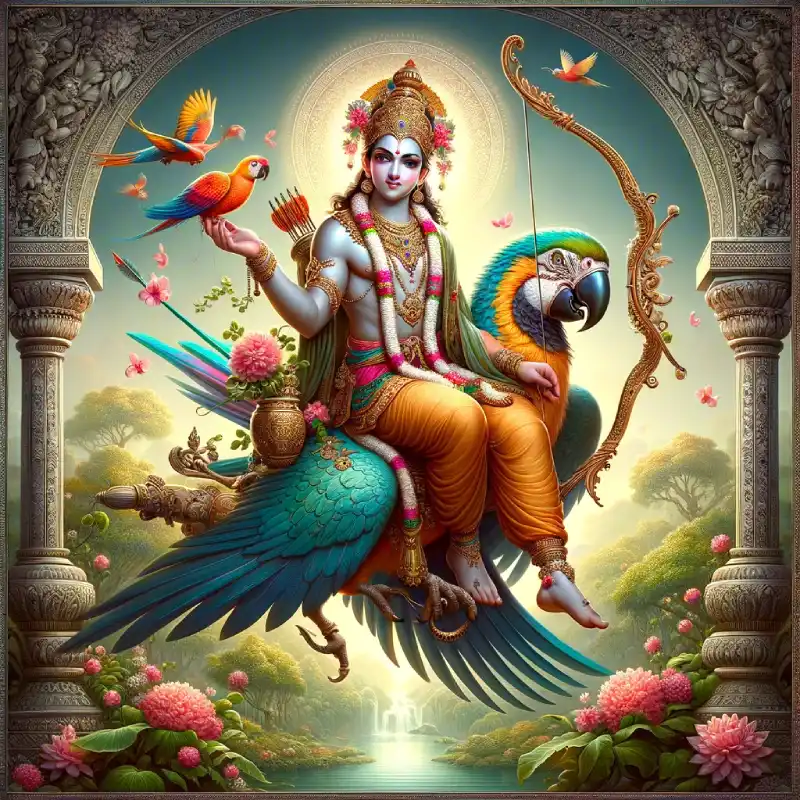
Kama is a well-known Hindu deity related to love, desire, and other associated endeavors of attraction, who has lit the passions of many. Traditionally represented as a beautiful young man with a sugarcane bow and floral arrows, he not only stands for passionate love but also portrays desire and sensual pleasures in a way.As a love god, his main function is to promote love and attraction. Subsequently, he is an important political figure in political power games.
One of Kama’s most well-known legends is how he tried to kindle love in the heart of Lord Shiva for Lord Shiva’s consort, Parvati. Although this act results in Kama’s destruction at the burning gaze of Shiva’s third eye, such as a sacrifice, it eventually creates conditions for the unity of the divine couple, demonstrating the atypical dynamism of love.
Through such stories, in particular, Kama is perceived as ‘a former, a causer, who lets people out of obscurity, and brings them to happiness and fulfillment through love and appetite.’
Kama’s role in Indian mythology shows how relevant love is for humanity and to what extent it can tighten knots, bring change, and elevate life in its essence.
10. Inanna (Sumerian Mythology)
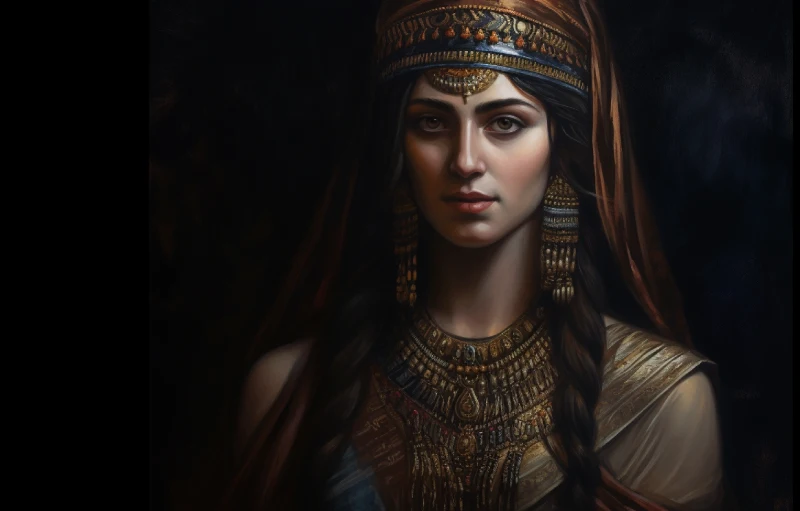
Inanna is among the all-important goddesses in Sumerian mythology, whose domains include love, beauty, and warfare. Inanna is candidly fierce, independent, and forever straightforward, as she is most often portrayed as an intense beauty who nurtures love but is not afraid of a season of passion either.
In her myths, she enjoys numerous sexual escapades and exploits, particularly a love story with the god Dumuzi, which depicts love, loss, and longing for more desire. The events of Inanna in the underworld also reflect on the thematic cycle and the human condition, where love and life are always intertwined with pleasures and pains.
Passing through Inanna’s various colorful and lively narratives, she embraces the complicated and often rough nature of love as it is capable of both creation and destruction.
11. Clíodhna (Irish Mythology)
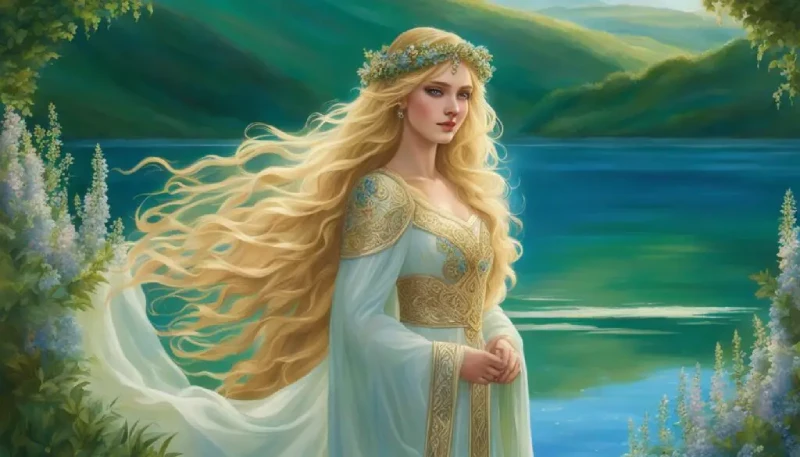
Clíodhna was said to be the most beautiful woman that lived on the Earth, the world’s standard of beauty. Though more of a Banshee or the Queen of Banshees, she was also considered the goddess of beauty because of her attractiveness.
Most of such love goddesses intersected with Clíodhna’s mythology in a different context. She remained pure torso until she met a mortal called Ciabahn, who happened to be the most handsome man on the face of the Earth. Out of that deep affection and her desire to dwell with him forever, Clíodhna made her way out of Tir Tairngire, the land of gods.
However, this love story moved forward with rather a sad development. Manannán mac Lir, the sea god, was displeased that Clíodhna had taken a mortal and caused the horrible disturbances in the sea in the form of a huge wave that took her back while Ciabahn was away.
This separation transformed Clíodhna into a Banshee, a spirit that was believed to wail and mourn at the death of an individual while embodying the sorrow Banshee also foretold of coming death. Her story illustrates the rough and often painful interface between the scenes of divinity and humanity and the collision between these two and their aftermath.
Clíodhna changing into a banshee represents the anguish associated with love and loss, reminding us that the rift that exists between gods and men is naturally not easy to overcome.
12. Tu Er Shen (Chinese Mythology)
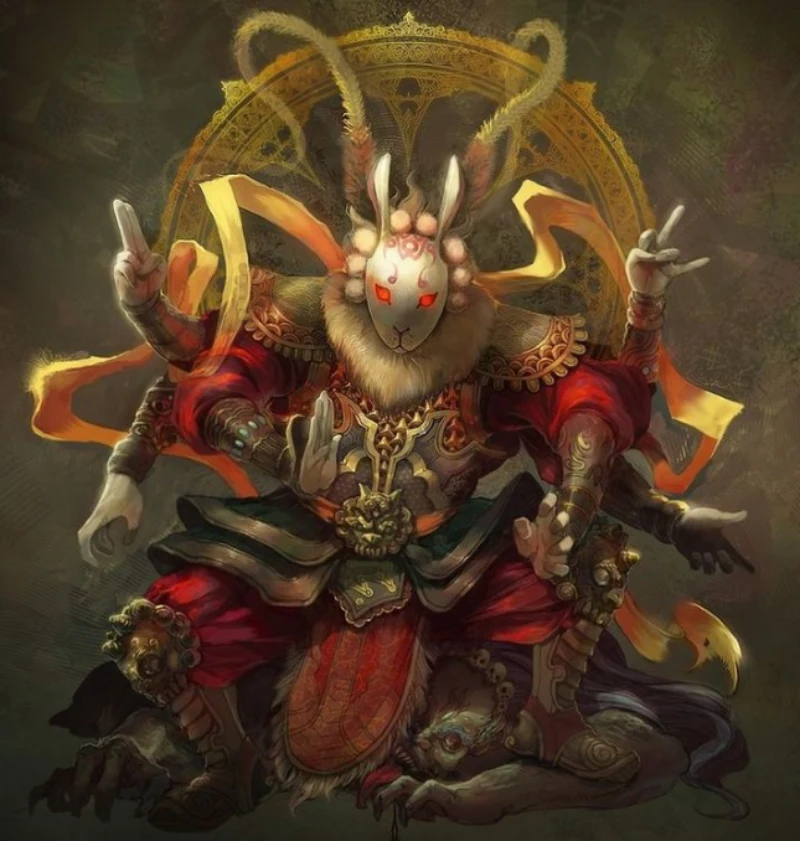
Known as the god of homosexual love and marriage, this god was known as Hu Tianbuo when he was mortal. The name, in a literal sense, means rabbit deity. As per mythology, he took birth at the time of Qing dynasty. Attracted to men, he fell in love with one of the most handsome imperial inspectors of the Fujian Province.
He used to peep in the bathroom from a hole, and one day, he was caught. This was when he accepted that he had affection for men. Furious to learn this fact, he was sentenced to death by beating.
Since his love was pure, the underworld gods felt bad and took pity on him. Following this, he was given the boon and was restored as the god of homosexual relationships. His statue was erected in the city, and people started worshiping him. This was also one of the reasons that led to the downfall of the Qing dynasty when people from his cult revolted.
Though only a few shrines are dedicated to him, he is still worshiped among various cults for his true form of love and affection. But the sad part of this mythology is the fact that, still today, homosexual relationships are considered wrong and are punishable. At the same time, gods were impressed by this pure emotion, which blessed a man with the stature of a god.
13. Hathor (Egyptian Mythology)
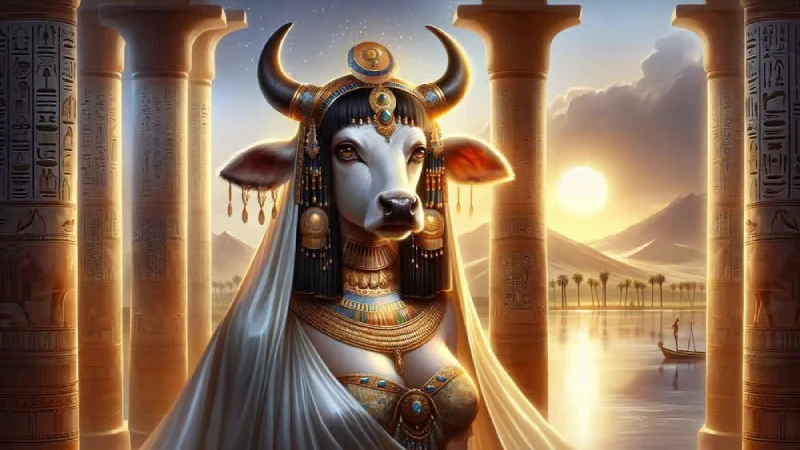
Hathor is the Egyptian goddess of love, music, beauty, and fertility. She is usually displayed in two forms. One is a cow, and the other is a female who has the horns of a cow. This is why she symbolizes motherhood and joy, too. As the goddess of love, she symbolizes both romantic affection and the nurturing bonds of family.
In Egyptian mythology, Hathor was a protector of women and a guide to the afterlife, ensuring the safe passage of souls. Her association with music and dance reflects the joy and pleasure that love can bring, while her nurturing side emphasizes the deep care and compassion inherent in loving relationships.
Hathor’s role in Egyptian culture highlights the connection between love, happiness, and life’s pleasures, illustrating the significance of love in both the mortal world and the divine.
Conclusion
The mythological deities of love and lust play a significant role in shaping cultural views on these powerful emotions. From Aphrodite’s graceful allure to Freya’s fierce independence, these figures illustrate how different cultures perceive love and desire, showcasing the complexities that come with them.
Each deity embodies unique aspects of love—whether it’s tenderness, passion, or even chaos—reflecting the diverse ways humans experience and interpret these feelings.
Mythology intertwines human emotions with divine power, suggesting that love and lust are not just personal experiences but universal forces that connect us to something greater. These stories remind us that our emotions can inspire, challenge, and transform us, echoing through time and across cultures.
